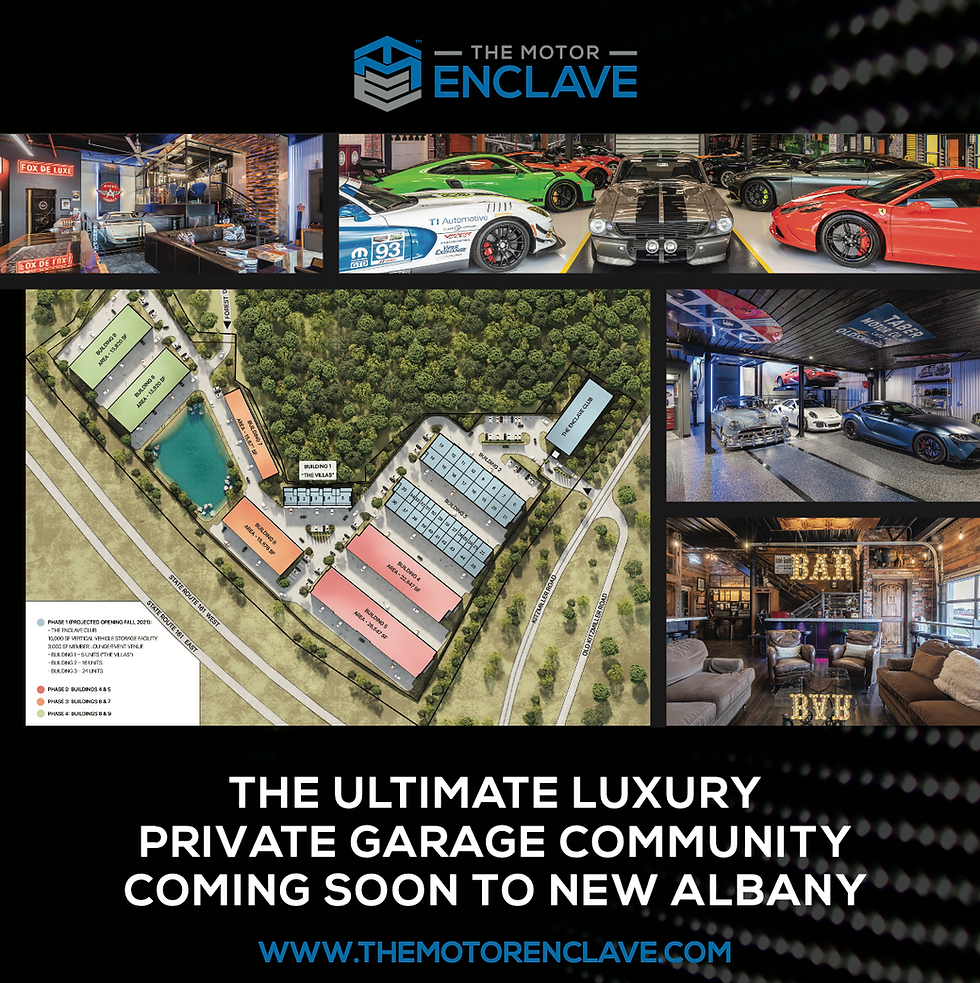BREAKING THE MOLD
- Jan 24, 2020
- 3 min read
Written by Andre James

This past July at the Royal Horticultural Halls in the heart of London, the oohs and aahs emanating from hundreds of VIP guests were louder than the engine of the hypercar they'd gathered to ogle. Guests were greeted outside the event by a convoy of a dozen historic and current Lotus cars, all sporting a blazing yellow paint job. This bold statement paled in comparison to the unveiling of the world's first all-electric British hypercar: the Lotus Evija.
As he presented the nearly 2,000 horsepower two-seater to the audience, Phil Popham, CEO of Lotus Cars remarked, "The Evija is a seismic shift for Lotus and signifies the rebirth of one of the UK's most renowned sports car marques. It will act as a halo for the thrilling new range of Lotus performance cars that will follow."
Limited to 130 examples, the Evija (pronounced 'E-vi-ya'), means 'the first in existence' or 'the living one.' As Lotus' first hypercar, and its first model with an electrified powertrain, it represents a new chapter for the 71-year-old sports car brand.

The Evija is also the first Lotus road car to feature a one-piece carbon-fiber monocoque chassis; the manufacturing process is identical to that of an F1 chassis. Russell Carr, Design Director of Lotus Cars, explained, "We studied how Le Mans race cars use airflow creatively to go over, under and around the vehicle, but also through it. This concept of 'porosity' is key to the Evija and has enabled us to create a timeless design with exceptional amounts of downforce." Motorsport-inspired road car design and technology is expressed throughout, from the Venturi tunnel that pierces each rear quarter to the adjustable race-style seats.
To minimize drag, traditional door mirrors are strikingly absent. Cameras integrated into the front wings electronically deploy on unlock, as well as another camera built into the roof. Their images are displayed on three interior screens. Also missing are door handles. The pair of dihedral doors are operated via the key fob. Once in the car, a switch in the roof console closes the doors.

The advanced all-electric powertrain was developed in tandem with Williams Advanced Engineering, of Formula One and Formula E fame. The 2,000 kW lithium-ion battery pack is mid-mounted behind the passenger compartment and directs energy to four e-motors, each producing a peak 493 horsepower. This configuration represents the lightest and most energy-dense electric power package ever fitted to a road car, making Evija the lightest pure electric hypercar ever to go into series production.
Torque-vectoring is fully automatic and self-adjusting, so that power is distributed to any combination of two, three, or four wheels within a fraction of a second. ESP stability control ensures safety in all road conditions.

Evija clocks the 0-62mph sprint in under three seconds, before going on to a top speed in excess of 200mph. Lotus points out that the car's advanced aerodynamics and four-radiator cooling package keep the battery at an optimum temperature, meaning that the Evija is capable of being driven flat-out with no derate for at least seven minutes in Track mode. A digitally created sound, transmitted via a front-mounted speaker, alerts pedestrians to Evija's presence.
Fully charged, the Evija's range is between 250-270 miles. Using existing charging technology, charge time will be 12 mins to 80% and 18 mins to 100%.

The 'floating wing' dashboard is arguably the most striking feature of the cabin, which Carr said was inspired by Lotus' prototype racing cars from the late Fifties and early Sixties. "It reinforces Colin Chapman's cast-iron rule that no Lotus component goes along for a free ride, " added Carr.
Carbon fiber shell seats are hand-trimmed with thick Alcantara-finished pads. A thin metal band – engraved with the words 'For The Drivers' – runs centrally through the squab of both. Ahead of the steering wheel is a state-of-the-art digital display, providing the driver with key information. The screen displays essential functions only, with information appearing as required when the appropriate button is pushed, then fading when no longer needed. Further controls are located on the floating 'ski slope-style' center console.
Priced from just over $2m, Lotus will offer Evija customers the opportunity to specify the car precisely as they wish, including unique paint finishes, interior trims, and detailing.
Designed and engineered in the UK, production is scheduled to begin at Lotus’ Hethel headquarters in 2020.
















Comments